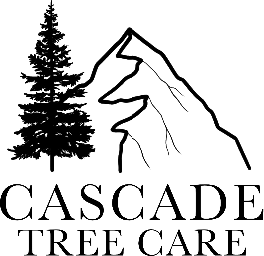Your Complete Checklist for Choosing the Best Tree Trimming Service
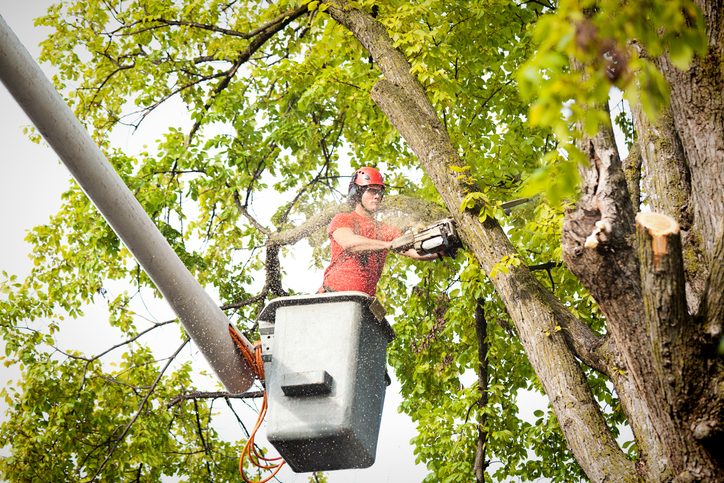
Selecting a trustworthy tree trimming service in Bellevue, WA, can make all the difference in maintaining your property. Homeowners find themselves confused when it comes to comparing different companies, determining costs, and ascertaining their qualifications, which are all reasons that make this process even more stressful than it has to be. A trustworthy company, like Cascade Tree Services, is a model of professionalism that a homeowner needs. Below are all of your tasks to make informed decisions, with a checklist that will help you in hiring a professional with ease and without digging a hole in your pocket that is filled with costly mistakes. Check Licensing, Insurance, and Certifications One of the initial considerations when selecting a tree removal company is ensuring it has the necessary licenses, insurance, and certifications. This would help protect you in case of accidents that result in property damage or physical injuries. A trustworthy service provider will share information about their established standards of care, providing you with a certain level of satisfaction even before a project has been started. Proper credentials also indicate that a supplier values professionalism. Review Experience and Track Record Experience is important when it comes to dealing with complicated trimming or dangerous tree removal. Ask how long the company has been in business in your area and if they have done similar work for other customers. This ensures that they are able to manage uneven ground, diseased limbs, and hazards. Local knowledge matters even further, as experts know which types of trees are in Bellevue as well as local tree laws. Request Detailed Estimates and Breakdowns of Prices Prior to opting to use a company, make sure you get a written estimate that outlines all charges for labor, equipment, hauling, and other related services. This will also help you objectively compare tree cutting costs in Bellevue, WA, among various companies. Transparent pricing means that you are not surprised by additional charges. A reputable repair service would also take you through their estimate and resolve any questions you may have. Assess Equipment, Safety Requirements, and Crew Training Tree trimming can be a precise job, and this can only be done with proper equipment and trained personnel. Look for companies that are investing in the latest technology available, as well as those that are complying with OSHA guidelines. Enquire if the crew provides constant training in climbing, rigging, and emergency response. With proper equipment and experts, tree trimming in Bellevue, WA, becomes much safer. Define the Full Service Offering Tree care should go beyond trimming. Many homeowners also need pruning, removal, emergency services, or getting rid of tree stumps in Bellevue, WA, after a major project. Choosing a full-service provider ensures your landscape is cared for from start to finish. A wide range of services offered also means that your company can provide customized services for your mature, young sapling, as well as your seasonal needs, giving your yard long-term health. Look for Reviews, Testimonials, and Reputation Online reviews are a powerful means of assessing professionalism, timeliness, and customer satisfaction. A person should look for a consistent reputation on sources like Google, Yelp, and other forums. Positive testimonials are often a reflection of how a company approaches communication, customer issues, and long-term customer relations. With a company that has a solid reputation, you know you are going to get good service. Verify Cleanup and Disposal Procedures Tree trimming may result in a lot of debris, and it does not necessarily come with cleanup costs. This would be a good question to ask if all services are taken care of, such as branch removal, stump removal, and wood. A company that follows proper cleanup ensures that your yard looks amazing when done. There are no misunderstandings when expectations are set, which ensures a smooth journey from beginning to end. Compare Scheduling, Availability, and Responsiveness Quick turnaround and flexible scheduling are a must, and even more important if hazardous conditions exist due to broken branches. Ask when they can come to your property and how quickly they can start. Responsiveness represents professionalism, as organizations that are receptive to communication are likely to offer consistent services. This factor applies, especially for Bellevue residential homeowners who are experiencing tree-related issues amidst stormy weather. Conclusion To find a professional tree trimming company that suits your needs, you must consider a list of factors. These factors help you obtain a safe, pleasant, and well-maintained landscape perfectly trimmed for a long period of time. Are you ready for expert tree care? Contact a trusted local professional from our team at Cascade Tree Services to keep your landscape safe and thriving. Call us at 425-530-9697 today! FAQs 1. What are the qualifications I look for in a tree trimming company? Check for licensing, insurance, and professional certifications from arborical associations. This ensures that your company has met all necessary requirements. It also ensures that you are not liable in the event of accidents. 2. How can I estimate the price of tree trimming in my location? Costs are determined by size, condition, access, and equipment needed. Asking for written estimates from different companies will help you make a comparison. Reputable companies will break down every charge for you. 3. Does stump removal come with tree trimming services? Tree stump removal can either be a distinct operation or part of a certain quotation, which should also be ascertained. Full-service companies are equipped to tackle tree trimming, removal, and stump grinding.
The Importance of Tree Stump Removal You Need To Know
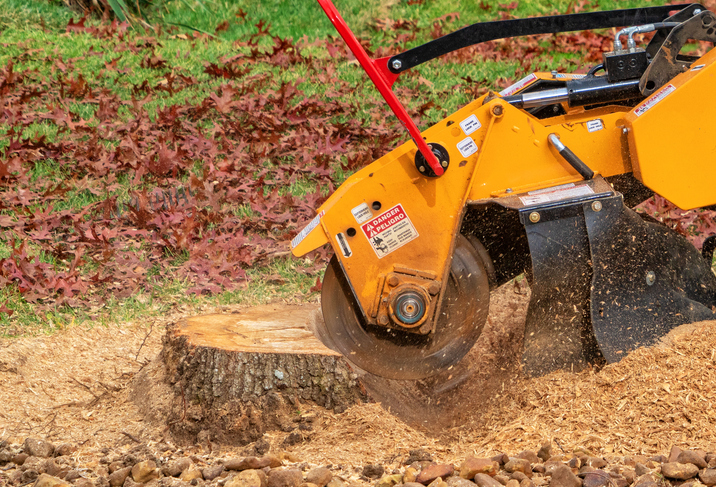
Proper stump removal in Redmond, WA, is necessary for the safety, health, and aesthetic appeal of your landscape, especially after the removal of unwanted or hazardous trees. Most homeowners don’t think about how leftover stumps can affect the soil’s health, pest activity, and growth of future plants, which makes expert guidance from Cascade Tree Services valuable when planning long-term yard maintenance. What seems like a harmless stump that has been left in the ground to nature will rapidly grow into an obstruction that will make lawn care difficult, hinder any outdoor projects, and invite pests to stay around your house. Knowing the reasons why timely stump elimination is important allows you to make educated decisions on how to protect your home and enhance your outdoor space for years to come. Stumps Become Breeding Grounds for Pests Stumps may also attract termites, ants, beetles, and rodents that thrive in decaying wood or moist organic matter. Once these pests take hold, they can migrate into healthy trees or structures, causing widespread damage that becomes costly to repair. Leaving behind a stump, especially in warm seasons, is an invitation to the most serious of infestations, as pest populations grow very quickly. Removing it eliminates a major food source and helps maintain a safer, cleaner outdoor space around your home. Stumps Can Cause Unwanted Tree Regeneration The root system that is left after a tree has been cut may still be alive and generate sprouts. These sprouts often grow quickly, causing overgrowth in the vicinity, and need to be repeatedly cut or chemically treated. It also interferes with the view of your landscape and monopolizes nutrients from the other plants around it. Skilled services such as tree removal and stump grinding in Redmond, WA, hinder this pernicious circle and restore balance to your yard. Stumps Create Hidden Safety Hazards A stump left in the middle of a lawn can easily serve as a tripping hazard, especially when it is near a walkway, especially for children, visitors, or pets that may not see it. These types of accidents may cause injury and even potential liability concerns for homeowners. The appearance of small stumps is uneven, which creates unsafe conditions when mowing or completing other routine yard maintenance. By removing them, you assure safer access throughout your property and eliminate preventable risk. Tree Stumps Are Obstructions To Landscaping Whether garden expansion, adding a patio, or installing new sod, an old leftover stump can stall such a project from the very outset. Its roots can also block irrigation line installation or compromise ground leveling. As stumps take up valuable space, they restrict design possibilities and are bound to make homeowners accommodate an unwanted obstruction. Clearing them allows full creative freedom, going more smoothly into the future with landscape improvements. Stumps Provide A Site For Fungal Proliferation Rotting wood is a perfect environment for fungi such as mushrooms and mold, which often appear in clusters around old stumps. These organisms can spread to nearby soil, plants, or even parts of your property if not addressed promptly. Some fungi can be hazardous to the health of pets or children playing in the yard. By removing the stump, you will get rid of a source of decay and upkeep in an attempt to keep a cleaner, healthier environment in your yard. Stumps Can Damage Lawn Equipment Tree stumps are hard and dense, and unforgiving. Many people inadvertently damage lawnmower blades or trimmers by getting too close. These repairs add up over time, making this task a smart long-term investment. Even seasoned landscapers realize that working around stumps slows productivity and puts more wear on equipment. Clearing them optimizes efficiency and cuts down on unnecessary maintenance. Stumps Interfere With Soil And Root Health A decaying stump continues absorbing nutrients deep below the surface, where this would be at the expense of grass, plants, and shrubs that need essential minerals and moisture. In due course of time, this imbalance weakens soil quality and affects overall growth patterns. Removing the tree stump restores the capability of your yard to support healthy plant life and encourages further, more balanced root development. Proper extraction ensures that your soil can be revitalized for future landscaping projects. Stump Removal Appealing to Curb A remaining tree stump disrupts the view of a well-kept lawn, landscaping detail, and curb appeal. One stump alone can make the space appear unfinished or otherwise ill-maintained. By taking it out, the outdoor areas just seem so much cleaner, neater, and more attractive. Professional stump grinding in Redmond, WA, renews your yard in an instant and amplifies the overall value of your house. Conclusion Although tree stumps may be minor in appearance, they provide long-term challenges related to safety, aesthetics, and ecological health. Their removal provides protection not only to your property but also allows smoother landscaping projects and prevents costly repairs in the future. Your investment in proper stump elimination paves the way for a cleaner, healthier, and more attractive outdoor space. Contact our experienced professionals at Cascade Tree Services at 425-530-9697 for safe, reliable stump removal and long-term yard protection. FAQs 1. Why would a homeowner have stump elimination done? Removal of the stump prevents infestation by pests, tripping hazards, and unwanted regrowth of trees. It also provides better flexibility in landscaping and makes your yard more attractive. 2. How long does stump removal take? Depending on stump size, location, and root depth, most of these removals are done in a single visit. The area usually gets evaluated by the technicians first to determine the safest and most efficient removal method. 3. Can stump grinding damage my yard? Stump grinding, when done by professionals, creates minimal disturbance and leaves the surrounding soil and plant life intact. Immediately after grinding, the area can be replanted, landscaped, or seeded.
How Often Should You Schedule Tree Trimming in Bellevue?

Scheduling tree trimming in Bellevue, WA, is essential to ensure your yard remains healthy, secure, and aesthetically pleasing. Residents of Bellevue, as well as other areas, trust Cascade Tree Services due to the customized care that their trees need, which depends on certain climatic conditions and patterns. In addition, trimming ensures that your yard remains secure. A consistent trimming and care schedule means that your tree remains sturdy, healthy, and protected from storms. With proper timing, this task can help your tree grow, avoid overgrowth, and optimize sun entry in your yard. Homeowners can optimize a tree care schedule by understanding proper timing for different types of trees. Knowledge of Local Climates and Growth Cycles Bellevue’s wet winters and warm summers make a huge impact on how quickly your trees are able to grow. This also ensures that your trees grow quickly in the spring, which means that you should check your trees regularly. Some of your trees also grow in conditions where excess moisture creates fungus, which can cause pests. To avoid hampering tree growth, it is important to divide your trimming cycles in line with the seasons. With this, your trees will grow in the correct directions. A company will usually suggest that you schedule the tree trimming service in Bellevue, WA, in either winter or spring, when it will help minimize stress to your tree and promote healthy regeneration. Annual Trimming for Most Mature Trees In most cases, most of the mature tree species in Bellevue require annual pruning to avoid overgrowth. If a tree is allowed to grow without professional care for a period of over a year, it will develop heavy branches that are likely to break when it is windy. Homeowners with mature trees would benefit from annual visits since overripe tree branches may interfere with roof tops, electrical wires, and walking paths. Annual trimming of tree branches also prevents diseases from developing in them as a result of insufficient air and sunlight. Younger Trees Require Greater Attention Younger trees grow quicker, with a lot needing to be pruned to develop a stable root structure. Some must be pruned every six to nine months to help them grow upright and counteract other undesired branches that are stunting a successful root structure. Since the juvenile trees are also in a period of adaptation from the various seasons in Bellevue, it ensures that regular trimming takes place, which will make them resistant to the effects of storms and to contracting any diseases in their early years. Fruit Trees Require Seasonal Maintenance A fruit tree has to be pruned at least once a year to help it bear as many fruits as it can. Fruit trees in Bellevue grow very quickly, and in their early stages, many of them have to be pruned to avoid being too close to each other, which affects their fruits as well as their ability to tolerate sunshine. The best season to cut fruit-producing tree varieties would be late winter, but it would also be ideal to do a bit of trimming in the summer. This would help in cutting back weak branches that would break easily. Also, it would protect the plant from insects that are usually found in fruit-producing plants. Evergreen Trees Require Less Pruning Evergreen trees, seen everywhere in Bellevue, are typically trimmed every two to three years since their rate of growth is relatively slow. These types of trees grow on their own without requiring much trimming, but it is important to remove any dead and diseased limbs. If your evergreen plant gets too dense, you find that it is crowding other structures around you, or you experience issues with pathway access, trimming by a professional will solve this problem. While it does not require as much maintenance as other types of plants, it will, nonetheless, benefit from cutting. Safety Hazards Can Require Immediate Trimming Some types of trees ought to be pruned when there are potential hazards outside of a scheduled routine. This takes into consideration storm conditions, which may cause weakened tree limbs that are susceptible to breakage. Also, leaning, dead, and overhanging tree limbs near your house pose potential hazards. Early identification of these risks can help avert emergencies and minimize long-term repair costs. Homeowners can check their trees for potential risks after a strong gust of wind or heavy rainfall, requiring immediate trimming for a secure outdoor setting. Trimming for Prevention of Diseases and Pest Involvement Its humid climate provides a perfect environment for fungal infections, decay, and infestation. Annual trimming of the plant will eliminate any weak and fungal-infected plant parts that are prone to spreading further infections in other areas of the plant. This would help enhance air circulation and sunlight, which reduces moisture. Routine disease-prevention trimming helps trees recover faster and strengthens their natural defenses. For long-term health, homeowners should schedule seasonal inspections and follow through with corrective trimming recommended by tree specialists. Monitoring Growth Between Visits Although it follows a predictable routine, it is important for a tree to be periodically inspected in order for it to stay in good health. This can be done by monitoring for signs of drooping branches, odd growth, and sparse leaf distribution. Homeowners who make it a point to keep a keen eye on their landscaping property are able to maintain healthier, more attractive trees. This also eliminates potential problems by making every cut a professional has to make more efficient. Conclusion Tree trimming plays a critical role in maintaining your property’s functionality, stability, and aesthetic appeal. With knowledge of the various needs of different types of tree varieties, homeowners in Bellevue are able to plan for trimming when needed to avoid negatively affecting plant development. FAQs 1. How Frequently Should Homeowners in Bellevue Trim Their Trees? An average tree would require cutting every year, but some, like those that are still young or fruit-producing, would require cutting more often. 2. To trim a tree in Bellevue, when in a year is ideal?
Top Reasons Homeowners Choose Professional Tree Stump Removal
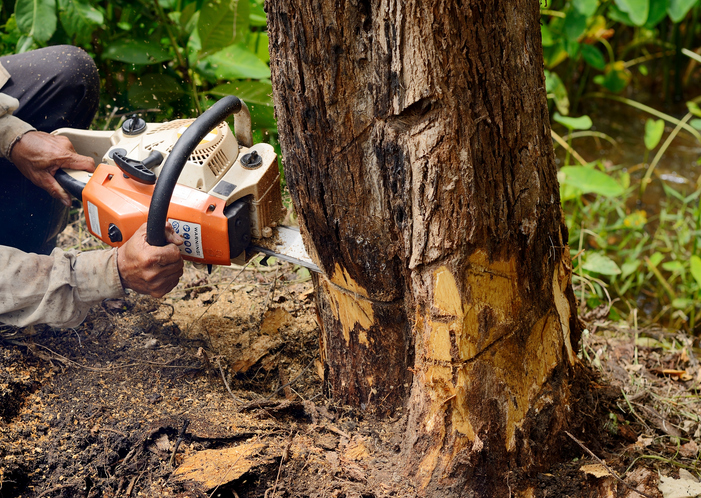
Such stumps are usually eliminated for reasons of safety and aesthetics. Experienced tree stump removal in Bellevue, WA, is what most homeowners seek to keep the yard healthy, useful, and picturesque. Expert services guarantee advantages far beyond what DIY methods could offer, from providing safety to long-term savings. Letting trained specialists take over really makes a difference. 1. Professionals Ensure Safe and Efficient Removal While tree stumps may seem harmless, improper removal of a stump can lead to property damage, injury, or interruption of underground utilities. Professionals who are certified to perform the removal and have the appropriate equipment and machinery (including stump grinders and safety equipment) are able to safely and quickly remove tree stumps in a safe and effective manner. The competency level will let them estimate the depth of roots, soil conditions, and stability of the stump for smooth completion without any risk. While DIY removal involves much trial and error, professionals will handle it skillfully and precisely. 2. Specialists Prevent Regrowth and Root Spread Some of the common problems with DIY stump removal are incomplete extractions of roots, unwanted regrowth, or sprouting. Professional stump removal services know how to eliminate deep root systems that can continue to expand underground. This will keep your yard from experiencing recurring growth, uneven soil levels, and landscape disruptions. Proper removal also helps avoid hazards like new shoots or root damage to nearby structures. 3. Professional Removal Eliminates Pest Infestations Old stumps attract ants, beetles, and termites that may eventually find their way to your home. Leaving the stump alone basically invites decay and insect breeding in the area. If you hire an expert tree removal contractor in Bellevue, WA, you can avoid these risks very early in the process. Pros dispose of the stump in such a manner that it prohibits any pest development, ensuring that the landscape around the removed stump remains protected. 4. It Improves Curb Appeal and Enhances Property Value A tree stump left behind can create an unkempt visual appearance on a perfectly landscaped yard. By hiring a professional to remove your stump, you will not only have a better-looking landscape, but also straight lines, level ground, and an area where you can plant other things or add decorative elements. When selling your home or improving your yard aesthetically, expert removal will help enhance the resale value of your home over time. Without the stump in the way, there are many more options to redevelop your outdoor space. 5. Professionals Save Time and Reduce Long-Term Costs DIY stump removal can be time-consuming, physically demanding, and expensive if tools need to be rented. Professionals, though, finish the job efficiently with their commercial-grade equipment. Their expertise prevents mistakes that could result in costly repairs later. Sometimes, following the stump removal, homeowners may schedule additional landscape services, such as tree trimming services in Kirkland, WA, with the same company for continued yard maintenance. Your investment in expert help will translate to savings in time and resources in the long run. Professional stump removal ensures safety, cleanliness, and efficiency for the homeowner who is dealing with leftover tree stumps. The work is done by trained specialists, ensuring peace of mind, along with offering long-term protection for your property. When done properly, stump removal can greatly improve a landscape and prevent issues that may arise in the future. For swift, professional stump removal and expert care, call Cascade Tree Services now at 425-530-9697 and bring back beauty and safety to your landscaping!
How Tree Removal Helps Protect Your Property During Storm Season

Storm season can be quite unpredictable in the Pacific Northwest, and one thing Bellevue homeowners know all too well is how high winds and rain can turn into serious property hazards. Overgrown, unstable, or diseased trees become much more hazardous during extreme weather conditions. Understanding the value of tree removal in Bellevue, WA, is paramount to maintaining safety in your home ahead of time. 1. Weak or Diseased Trees Are More Likely to Fail During Storms Trees that have situations of rot, fungus, or internal decay may appear stable on the outside and be structurally compromised internally. The first trees to fall when strong winds hit are those that are weakened. By hiring a professional arborist, hidden issues that you may have overlooked can be pinpointed, thus allowing you to take action long before any storm turns a vulnerable tree into a major hazard. Assessment well in advance prevents roof damage, broken fences, and costly emergency repairs. 2. Overgrown Branches Increase Roof and Powerline Damage Risks Long, heavy, or unbalanced branches are hazardous during storm season. Long, overgrown limbs may snap under pressure and land on your roof, your vehicles, or the nearby powerlines, which can lead to outages and costly repairs. Pruning strategically-often advised hand in hand with services like tree trimming near Edmonds, WA-reduces this risk. The best and safest option for any potential hazards surrounding a person’s property is to clear those hazards by removing them. If trimming activities of trees fail to resolve the issue of providing safety, then the best and safest option is to remove the tree(s) entirely. 3. Root Instability Can Cause Sudden Uprooting The removal of a healthy-looking tree may sometimes be the best solution for the surrounding area because of the possibility that a tree with healthy branches may have very shallow-rooted trees that could be easily uprooted by severe storms and winds. When this occurs, the uprooting of these trees could cause extensive damage to property and/or people. Storms saturate the soil, which decreases root grip and increases the likelihood of collapse. Professional arborists check the condition of the soil, the placement of the tree, and the health of the roots to determine if reinforcement, pruning, or full removal is the safest long-term solution for your property. 4. Clearing Hazard Zones Prevents Damage to Outdoor Structures Sheds, decks, patios, and outdoor equipment often lie within a tree’s fall zone. Clearing overgrown or high-risk trees creates a protective buffer around such structural locations. A trusted tree cutting company in Bellevue, WA, can assess which trees are at high risk and help you remove problem trees before storm conditions cause avoidable damage. This proactive step saves thousands of dollars by preventing impacts from falling limbs or entire trees. 5. Proactive Removal Reduces Emergency Storm Response Costs Storm-related emergency tree work tends to be costlier, riskier, and more stressful than pre-scheduling removals. Early removal of hazardous trees means you’re avoiding service calls at the worst times, road-blocked driveways, and falling, unsafe debris. Removal before an event helps prevent insurance claims and reduces road downtime significantly after a major weather event. Your future safety & comfort are why you should invest in professional services today. You don’t have to be in danger this storm season. A good way to prevent damage to your property due to storms is to detect trees that are weak, overgrown, or structurally unsound before the storms arrive. Preparing your home and its surrounding areas properly will help keep them safe, no matter what type of storm we are faced with. Prepare your home and property to withstand the next big storm. Call Cascade Tree Services today at 425-530-9697. We offer professional tree pruning, hazard assessments, and guaranteed tree removal services!
Why Regular Tree Maintenance Prevents Costly Property Damage
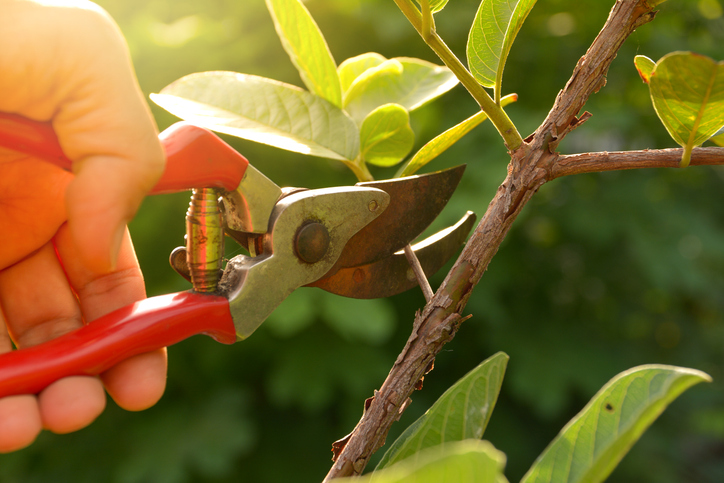
Caring for your landscape is part of the protection of your property, most especially if you live in a place with dense tree growth and unpredictable weather. Professional tree maintenance services in Redmond, WA, help improve tree health, reduce storm hazards, and ultimately save money from expensive repairs that could have been prevented. With the right care routine, your trees will remain strong, safe, and beautiful all year round. 1. Early Structural Problem Detection Reduces Risk By routinely inspecting and maintaining trees, any internal decomposition, fracture points along the trunk or branches, as well as weak limbs, can be detected and addressed before they have the chance to cause extensive damage or emergency situations. Certified professionals trained as arborists are adept at identifying potential tree hazards/actions that most homeowners may not detect until after a windstorm or severe weather has caused destruction to their property or surrounding areas. 2. Prevents Storm-Related Hazards Weak or overgrown trees can easily fall during a storm in the Pacific Northwest. Proper trimming and maintenance greatly reduce the risk of tree failures and falling branches during high winds. Scheduling tree trimming near Bellevue, WA, is common for residents who experience the same weather patterns; however, homeowners benefit just as much from keeping trees well-shaped and structurally sound before storm season arrives. 3. Overgrowth Control and Protection of Structural Integrity Branches that have become overgrown may cause scratches to the roof, damage to the siding, and interfere with electrical lines. If you perform regular maintenance on your home, you’ll have a safe space around it without hampering the natural growth of the tree. Managing the growth of dense canopies reduces the risk of breakage and damage from snow and/or ice, which are major causes of damage to property during winter months in our region. 4. Protects the Surrounding Landscape and Hardscape Tree roots and sprawling limbs can affect driveways, sidewalks, and underground utilities. Keeping your trees well-maintained prevents expensive repair costs and protects the safety of your outdoor spaces. Just like those who have to use tree removal services in Lynnwood, WA, once their trees become hazardous, a Redmond homeowner will be able to prevent removals by using proactive pruning. 5. Improves Long-term Health and Stability of Trees Healthy trees are much less likely to fail in storms or suddenly develop serious structural weaknesses. The absence of sunlight and air circulation to the branches of trees may render them unhealthy or weak. Consequently, tree care professionals emphasize the importance of getting the most from trees through proper pruning and ongoing long-term tree care. Continued long-term care for a tree will also support a balanced canopy, which, in turn, matters for the stability of the tree during severe weather. Over time, property owners will have trees that are healthy, balanced and healthy trees that provide safety from potential accidents and damage to property during stormy weather and will save them money and time on expensive emergency services. Property owners who are proactive in maintaining the health and safety of their landscape will continue to benefit from safe and healthy outdoor activities. For quality tree care that is as affordable and reliable as any other business, contact Cascade Tree Services today at 425-530-9697. Keep your property safe with trusted local professionals!
Top Signs Your Property Needs Professional Tree Trimming Services
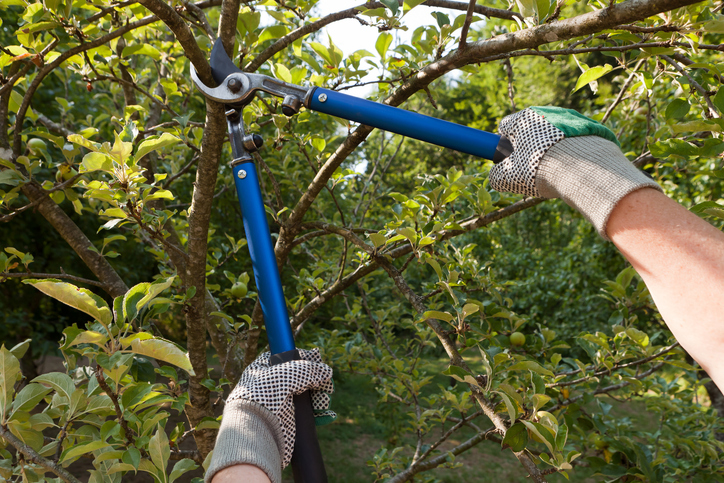
A well-maintained landscape improves your property’s curb appeal, safety, and long-term tree health, yet most homeowners neglect early warning signs that their trees are in dire need of attention. In the first paragraph, we’ll highlight how knowing when to schedule tree trimming services in Bellevue, WA, can prevent costly issues before they develop. 1. Overgrown Branches Touching Your Roof or Siding When branches reach too close to your home, they can damage shingles, scrape siding, or block gutters. Overgrown limbs also make it easy for pests to access your house. If there are low-hanging branches or any touching the structure, this is a clear sign that your trees need expert care. Timely trimming will help protect your exterior and prevent avoidable repairs. 2. Large Dead or Diseased Limbs Dead branches pose one of the biggest safety risks on any property. They can fall without warning, mainly when there are gusty winds or rainstorms. If you notice brittle, leafless, or fungal-covered limbs, it’s time for professional help. Unhealthy branches take a toll on the stability and overall growth of your tree, too. And in some cases, you may even need additional support services like tree stump removal services in Bellevue, WA, to clear hazardous debris and improve lawn safety. 3. Trees Growing Too Close Together When trees do not have adequate space for growth, they start competing for sunlight, water, and nutrients. As a result, the trees in the section are misshaped and experiencing poor growth due to overcrowding and a lack of balance. A well-balanced canopy improves air circulation around all branches of the trees. The removal of some branches also helps reduce the risk of branch failure due to uneven weight distribution. By carefully pruning trees that are competing for sunlight or space, you can help your landscape reach an ideal state of balance. 4. Storm Damage and Broken Limbs Seasonal storms in Bellevue often leave branches of trees cracked, bent, or split. Even damage that may appear minimal will only worsen with time and may lead to overall tree decline. Professional trimming helps to safely eliminate compromised limbs before they become hazardous. Severe storm damage requires the best tree removal in Kirkland, WA, for homeowners of nearby areas when a tree cannot be saved and poses a dangerous threat. 5. Too Much Shade or Poor Light Penetration Too much shade caused by trees makes lawns, gardens, and other plants suffer. Perhaps your yard is a bit darker than usual, or the grass seems to be thinning; overgrown canopies could be the culprit. Trimming provides more access to natural light and promotes better health of plants. Your outdoor space will be more pleasant to stay in. Proper reduction brightens your yard without harm to the tree structure. Early warning signs can help prevent accidents, improve tree health, and protect your home. Professional trimming ensures that the work is done safely and correctly, helping your landscape remain healthy and vibrant all year round when you have trees that are in need of attention, whether due to any of the above reasons (safety, structural integrity, and appearance), getting them taken care of in a timely manner is critical for ensuring that your trees live long lives and your property remains visually appealing. For trusted, expert care, contact Cascade Tree Services at 425-530-9697 to help you keep your home, business, and land secure and attractive.
How Tree Pruning and Stump Removal Improve Property Value?
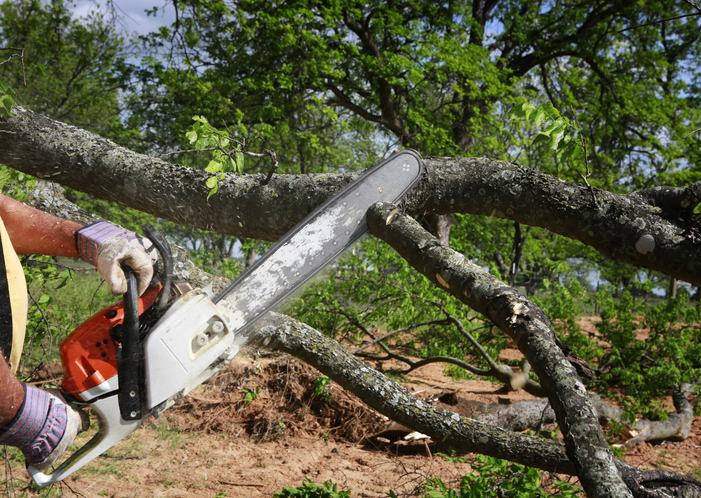
Introduction You can tell a lot about a home before you even walk in. The lawn, the trees, the shape of the yard, it all adds up to that first impression buyers remember. When branches hang low or old stumps stick out of the ground, it quietly drags down a property’s look. On the other hand, regular pruning and cleanup work can change everything. Homeowners who invest in tree removal services or proper trimming see their yards go from cluttered to cared-for. That small shift adds life, light, and, yes, real value to the place. Boost Property Value with Pruning and Stump Removal 1. A Neat Yard Sells the Story of Care People notice clean lines and open lawns. When trees are trimmed right, the house looks like it belongs there, not buried under leaves or shade. Buyers see a cared-for yard and think, “These folks maintain things.” That one thought makes a home more appealing right away. It’s simple, but it’s powerful: a tidy property feels safe, healthy, and ready to move into. 2. More Sunlight, More Comfort Big trees are beautiful, but too much shade makes everything gloomy. Pruning lets light through again. The difference is huge, rooms inside brighten up, grass grows stronger, and the whole property feels lighter. That natural light makes spaces feel bigger and more comfortable. Small fix, big payoff. 3. Avoiding Hidden Damage A loose or dying branch doesn’t wait for the right time to fall. It can wreck a roof, crush a car, or break a fence in one windy night. That’s why homeowners who call for the best tree removal get peace of mind. Clearing unsafe trees and weak limbs early stops damage before it hits your wallet. A safe yard feels like a secure investment. Buyers pick up on that fast. 4. Fixing Stumps That Steal Space Walk around any yard with leftover stumps and you’ll feel it; they’re always in the way. They snag mower blades, collect weeds, and make the ground uneven. A simple tree stump removal solves that problem for good. It opens up the lawn, flattens the surface, and makes landscaping easier. The yard instantly looks larger and cleaner. That extra bit of usable space adds real value. 5. Helping Trees Grow Stronger Healthy trees are worth keeping, but they need a little help. Pruning cuts away the dead parts so the good branches can breathe and grow properly. That keeps them balanced and full, not wild and uneven. It’s like giving your yard a fresh haircut; it looks sharper and lasts longer. A well-shaped tree adds shade without hiding the home. 6. More Room for What’s Next When stumps are gone and overgrowth is cut back, you finally get space to plan something new. Maybe it’s a small patio, a flower bed, or even a play area. The difference between a cluttered yard and a clear one is freedom. You can design, decorate, and enjoy it again. That kind of flexibility makes your home stand out on the market. 7. Keeping Pests and Decay Away Old wood draws bugs fast. Termites, beetles, and ants love soft stumps, and before long, they move into nearby soil or structures. Clearing old roots cuts off that problem early. Trimming also helps with air flow, keeping trees drier and healthier. A clean, pest-free yard gives buyers one less thing to worry about, and that confidence adds value. 8. Framing the Perfect View When trees crowd the house, it can look smaller. Cutting back just enough opens the view without losing charm. You get balance; the green still frames the house, but it doesn’t swallow it. Standing at the curb, people can finally see the home, the yard, and the space all working together. That’s what makes someone stop and think, “I could live here.” The truth is, these little things, cutting, trimming, and clearing, don’t just make a yard look better. They make it feel better. A clean landscape tells a story of care. Strong, balanced trees give shade without hiding the view. Smooth lawns with no old stumps look open and inviting. It’s the kind of attention that builds real, lasting value. Whether you’re selling or just proud of where you live, it’s work that always pays off. Conclusion Want your yard to add value, not problems? Reach out to our team at Cascade Tree Services at 425-530-9697. We’ll clean it up right, from roots to branches. 📌Trusted team, fresh name! Cascade Tree Care delivers the expert service you count on — fast, reliable, and professional. Protect Your Property, Remove the Risk. How Tree Removal Prevents Falling Branches From Damaging Vehicles Tree Removal Services That Prepare Land for New Construction How the Best Tree Removal Services Prevent Property Damage
The Role of Tree Stump Removal in Creating Space for New Landscaping Projects
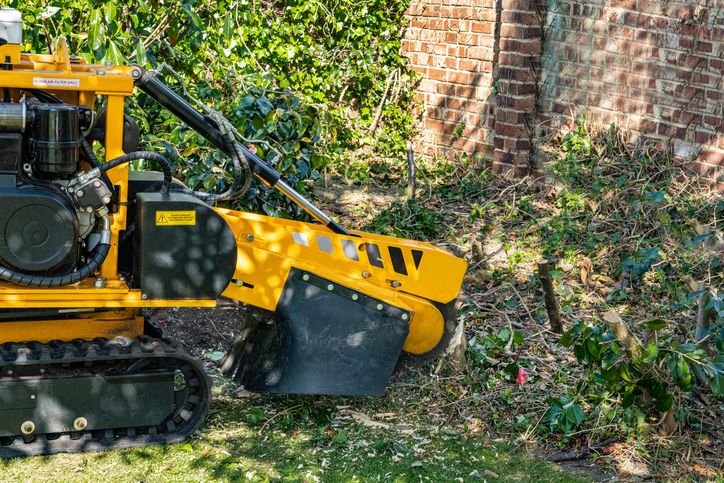
Introduction Every great yard starts with a blank canvas. You can plan all the flowerbeds, paths, or patios you want—but if there’s an old stump sitting in the way, it changes everything. That’s why tree stump removal in Lynnwood, WA, comes before any serious landscaping work. Stumps take up more room than they look. Roots twist under the soil, stealing space from what you’re trying to plant or build. Taking them out isn’t just cleanup, it’s the start of something new. Once they’re gone, the ground finally feels open, ready, and full of potential again. Clear Stumps to Make Room for New Landscaping 1. Making Room for Real Plans A stump doesn’t seem big until you try to work around it. It limits where you can place things, a walkway, a small pond, or even a row of flowers. After it’s gone, suddenly the yard feels bigger. You can picture how everything fits again. A flat, open space makes designing easier, and the result always looks cleaner. Removing the old gives the new ideas somewhere to grow. 2. Fixing Hidden Ground Problems Old roots stay busy underground. They keep soaking up moisture and pushing through the dirt long after the tree’s gone. When you start building over that, problems show up later, uneven patios, cracked concrete, or soil that sinks in spots. That’s why professionals who handle tree cutting in Bellevue, WA always recommend clearing roots completely before you start construction. Once they’re out, the soil settles naturally, giving your new project a solid base to last on. 3. Getting the Soil Ready for Growth Healthy plants start with healthy soil. When old roots rot, they pull oxygen and nutrients away from the ground. That leaves weak patches where grass won’t spread. After removal, the soil loosens and starts to breathe again. You can add compost, level the area, and plant without fighting those old, dead roots underneath. New grass grows faster, and the difference shows in just a few weeks. 4. A Safer, Better-Looking Yard Besides being in the way, stumps can cause real trouble, including tripping hazards, mower damage, and insect nests. They can ruin the clean look of a yard, too. Taking them out clears the clutter. It also makes maintenance easier because you can mow freely and keep edges tidy. Some homeowners go a step further, calling for tree pruning in Kirkland, WA, afterward to shape nearby trees. It ties everything together and keeps the yard balanced once the clutter’s gone. 5. Turning Dead Space into Living Space That old stump could be the reason your yard feels cramped. Once it’s gone, you can do something with that spot: a small garden bed, a firepit, maybe a path lined with stones. Without roots blocking the way, water drains evenly and soil stays firm. It’s amazing how one cleared area can change how the whole yard feels. Clean ground opens possibilities you probably didn’t even see before. You can’t build something new on top of what’s still in the way. Clearing out stumps is the quiet step that makes everything else possible. It stops future issues, strengthens the soil, and gives your ideas room to breathe. Whether you’re planting, paving, or just reshaping the yard, removing what’s dead lets new things take over. It’s the first real step toward a yard that feels fresh, open, and truly yours. Conlusion Ready to clear space for your next project? Call us, Cascade Tree Services, at 425-530-9697. We’ll take out the old so your yard can start fresh. 📌 Cascade Tree Care: Your trusted tree specialists. Fast, reliable, expert service tailored for every tree need you’ve always counted on. Call today! Protect Your Home, Clear Your Stumps. DIY vs. Professional Tree Stump Removal: Which Is Right for You? Why Tree Stump Removal Is Essential for Safe Landscaping Projects Why Tree Stump Removal Is Important After Storm-Damaged Trees
How Tree Removal Companies Use Modern Equipment to Protect Lawns and Driveways
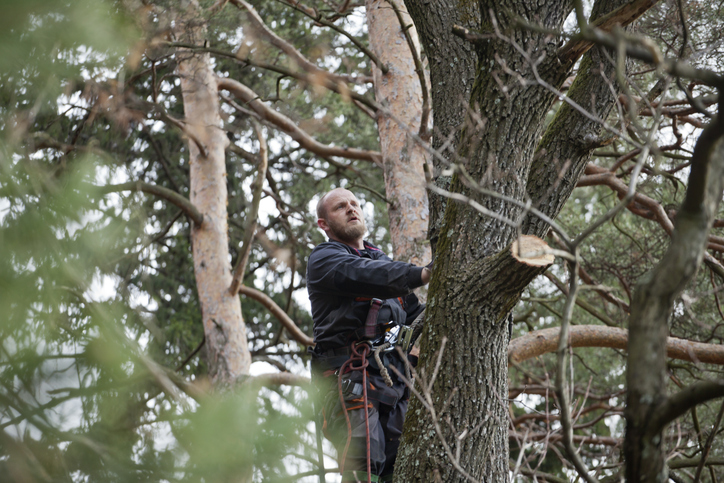
Introduction Most people picture big saws, heavy trucks, and a torn-up yard when they hear the words “tree work.” That used to be true. These days, things look a lot different. Crews plan the job around protecting the property first. The right tools make that possible. That’s where tree removal in Bellevue, WA really stands out. With cranes, mats, and compact machines, pros can take down a full-grown tree without leaving ruts in the grass or cracks in the driveway. It’s careful work, more like surgery than demolition. Modern Tree Removal Protects Lawns and Driveways 1. Mats That Save Your Grass Every yard has soft spots. When heavy wheels roll over them, the damage shows fast, deep tracks, crushed roots, and bare patches later. Most crews now carry track mats. They lay them down before the job even starts. The weight spreads out, so machines glide across instead of sinking in. When the work’s done, those mats come up, and the grass looks just like it did before. It’s a small detail, but it saves homeowners a lot of fixing later. 2. Cranes Make the Heavy Work Look Easy Climbing and cutting by hand still happens, but cranes changed the game. They lift whole sections, swing them over roofs, and lower them gently to the ground. No dragging, no bouncing logs. It keeps flowerbeds, fences, and driveways safe. Crews using cranes for tree stump removal in Edmonds, WA, finish faster and leave less mess behind. The precision is what makes the difference; you can lift, move, and clean all in one motion. 3. Compact Machines for Tight Yards Not everyone has a wide open space. Small yards and narrow gates used to make jobs a headache. Now there are small, tracked loaders and stump grinders that slip right through side gates without tearing things up. They’re light but strong enough to move big chunks of wood. The tracks roll easy, leaving the soil firm instead of chewed up. It’s the perfect balance for city homes with small lawns and tight driveways. 4. Protecting the Pavement Driveways take a beating during tree work if you’re not careful. Heavy gear can scuff or crack concrete faster than you’d think. Crews who care about their work cover the surface with panels or plywood before bringing in trucks. It’s one extra step that prevents hours of repair. Companies known for the best tree removal in Lynnwood, WA, do this almost automatically. They treat your driveway like their own. When they leave, it’s clean, smooth, and still looks new. 5. Cleaner Jobs from Start to Finish New chippers and loaders make cleanup easier than ever. The branches go straight from the yard into the chipper truck, no messy piles left behind. The machines run quieter, too, so the neighbors aren’t glaring out their windows. It’s quick, tidy, and surprisingly calm for such heavy work. The whole process feels more like organized teamwork than noisy construction. Tree work doesn’t have to tear things up anymore. With the right tools and smart planning, crews can handle tough jobs while keeping lawns and driveways spotless. Cranes lift the heavy stuff, mats protect the ground, and small machines do the rest. You get safety, speed, and a yard that looks untouched when it’s done. That’s what good modern tree care really means: strong work with a gentle touch. Conclusion Keep your lawn safe during every job. Contact our team at Cascade Tree Services at 425-530-9697 for careful, modern work that leaves your yard spotless. 📌 From trimming to removal, trust Cascade Tree Care for expert service done right — every tree, every time. Better Lawns Start with Tree Removal. Tree Removal Services That Prepare Land for New Construction How Tree Removal Contractors Assess Risk Before Tree Demolition How Tree Removal Prevents Falling Branches From Damaging Vehicles
